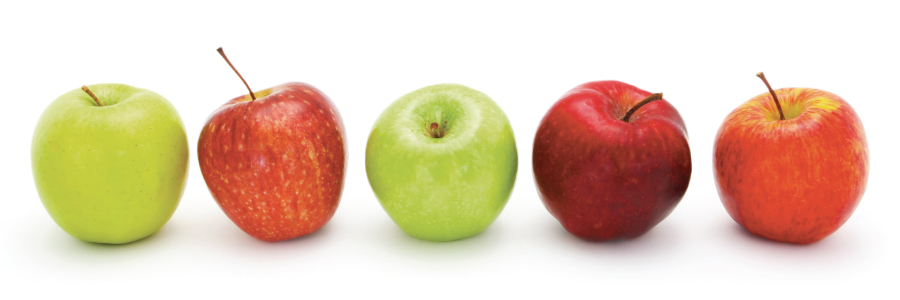


Sign-up for {N}power to get exclusive discounts, newsletters, members-only features, and more!

“Wanted” posters, old maps, and conversations with strangers at small-town country stores—these are the methods apple detectives use to find lost varieties of a fruit that once grew in orchards around the country.1 2 3 4 According to The Illustrated History of Apples in the United States and Canada by Daniel Bussey, more than 16,000 unique types have been documented in these two countries;5 yet, only an estimated 20 percent of that number is commercially available in the U.S. today, with approximately 11 to 15 varieties accounting for 90 percent of the fruit produced.6 7 And the forgotten fruit symbolizes more than dwindling numbers: It represents lost knowledge, lost traditions, lost flavor, and the essence of it all—lost biodiversity.
“Biodiversity—the variation of life on Earth—is essential to healthy ecosystems and serves as nature’s own system of checks and balances.” —Rodale Institute
Cultivating biodiversity is a core principle of organic farming, which relies on an ecosystem’s natural resources to make it productive. Consider an organic apple orchard, where native plants function as weed control, natural predators as pest control, and synthetic fertilizer is replaced with manure. A three-year study comparing the impacts on biodiversity in just such an orchard to its conventional counterpart found that the proof is in the pudding, or rather, the pie. The organic orchard scored higher on critical measures of soil health, including bacterial diversity and a greater abundance of Rhizobium, a nitrogen-fixing bacteria that plays an important role in soil productivity and fertility.8 It had an average of 20 times more earthworms, which is significant because they help with water movement, nutrient cycling, plant growth, and improving soil structure.9 Finally, the study found that organic management had the potential to deliver up to 103 percent higher economic benefits, “on the premise of no irreversible damages to the environment and biodiversity.”10

One hundred million bacterial cells. That’s the content of one apple (from stem to core), which may sound alarming, but it’s actually normal. Fresh produce has a microbiome, just like the human gut, and it’s essential for the health and growth of the plant.11 However, the way an apple is grown may impact the benefits or drawbacks of those 100 million cells. An Austrian study published in Frontiers in Microbiology in 2019 found that the microbiota in organic apples was significantly more diverse, balanced, and distinct than conventional. A core strain of the organic fruit was Lactobacillus, the “good” bacteria of probiotic fame. By contrast, the study found more pathogenic bacteria on conventional apples, including some that weren’t present in organic at all.12 13 14
Conventional apples have made an annual appearance on the Environmental Working Group’s “Dirty Dozen” list of produce with the most pesticide residue for at least the last 12 years, including 2021. 15 16 17 18 19 20 21 They even held the top spot for five years running, from 2011 through 2015.22
Look for Cox Orange Pippin, Ribston Pippin, and Orleans Reinette, apples that have histories dating as far back as the 1700s.13 14 And be sure to choose organic, because they’re extra delicious—the Austrian study found organic apples had higher levels of Methylobacterium, which is known to enhance flavor compounds!



Sign-up for {N}power to get exclusive discounts, newsletters, members-only features, and more!